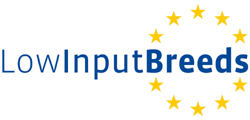Specialist Training Workshops for Young Researchers
A number of workshops open to both early stage researchers and agricultural advisors/technologists to facilitate an exchange of ideas/opinions and know-how and encourage potential future collaboration between the two target groups are taking place during the LowInputBreeds project.
Report about the Course on Genomic Selection in Davos in June 2011
by Nicola Bacciu, Alex Barenco, Anna Bieber, and Farhad Vahidi
From June 20-24, 2011 one of the LowInputBreeds’ specialist training workshops: on genomic selection, took place in Davos Switzerland. This five-day course was organized by LowInputBreeds partner agn Genetics, together with the Animal Breeding and Genomics Centre and Institute of Animal Sciences from Wageningen University and Research Centre.
Tutors on this course were Prof. Dr. Dorian Garrick and Prof. Rohan Fernando from the Department of Animal Science, Iowa State University, USA.
The very nature of this topic involves specialist language and concepts with a lot of acronyms and jargon which makes it difficult for non-specialists to comprehend.
For a detailed report click here.
Genomic selection is an approach where organisms are selected for breeding based on information from their genetics rather than what they look like, how fast they grow or other phenotypic traits we can (or maybe can’t) measure. The aim of the workshop was to evaluate genomic selection, linking phenotypic records with genetic markers such as Single Nucleotide Polymorphism or SNPs (called “SNIPS”) - areas of the genetic code where variation is identified as being present. This genetic variation is assessed using specialist statistical models known as Bayesian Methods of analysing probability to calculate a genomic breeding value. The course explained the range in Bayesian methods currently employed (A, B, C and CPi) and their properties.
Bayesian statistics probabilities quantify beliefs or knowledge about possible values of parameters.
- Three steps of Bayesian data analysis can be distinguished:
- Setting up a full probability model: provide a joint probability distribution for all variables
- Calculating and interpreting the appropriate posterior (conditional probability distribution) using prior beliefs and observed data.
- Evaluating the fit of the model and implication of the posterior distribution
One of the main differences between classical and Bayesian statistics is the use of prior information. Hereby beliefs about parameters are assumed previously to data analysis and formulated as prior probabilities. The evidence from the trial/data set is described using a so-called likelihood function. The likelihood is the conditional probability for the data given the parameters. Combining the prior assumptions and the likelihood function leads to posterior probabilities, which are conditional probabilities for the parameters given the data.
 This website was archived on December 19, 2017 and is no longer updated.
This website was archived on December 19, 2017 and is no longer updated.


